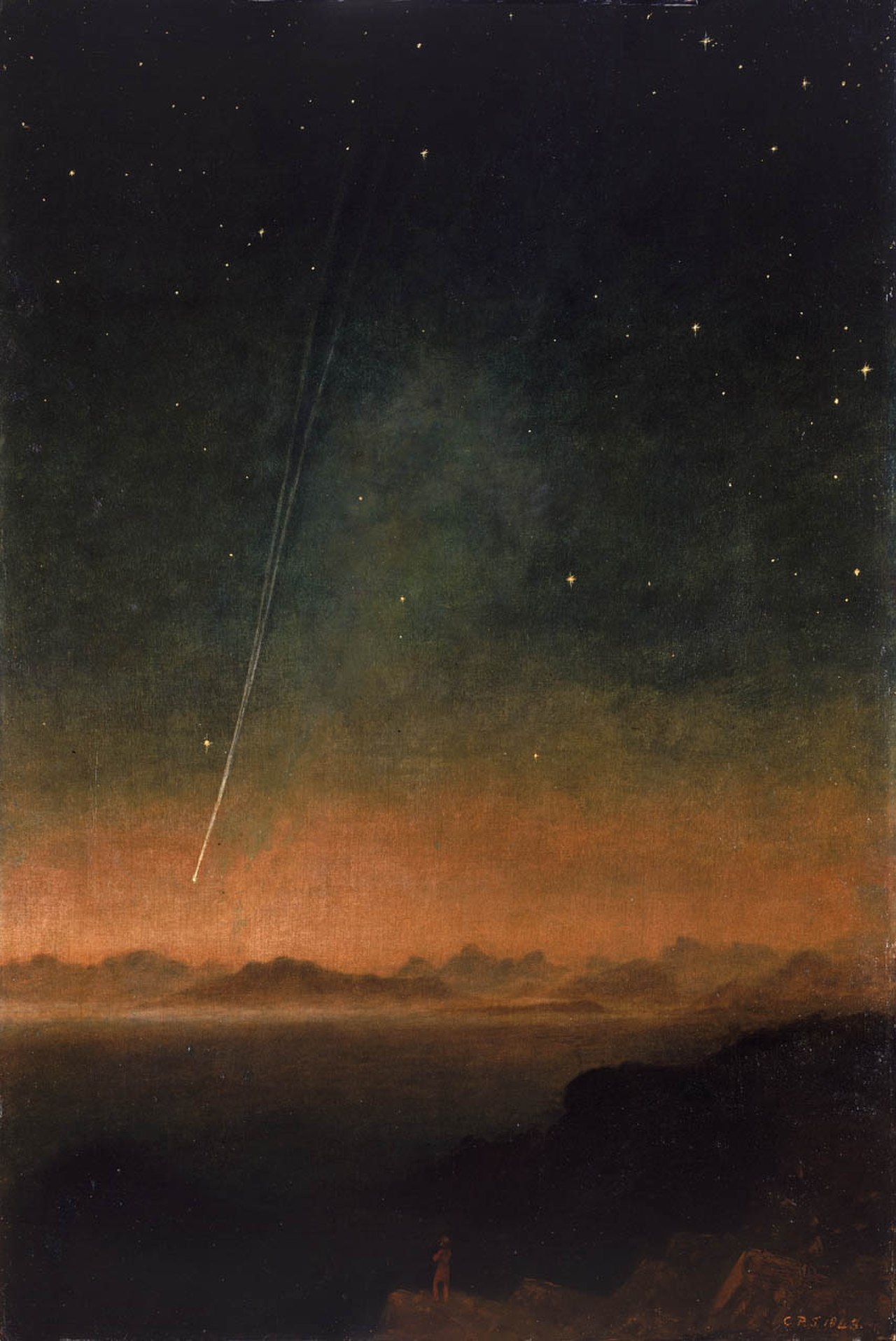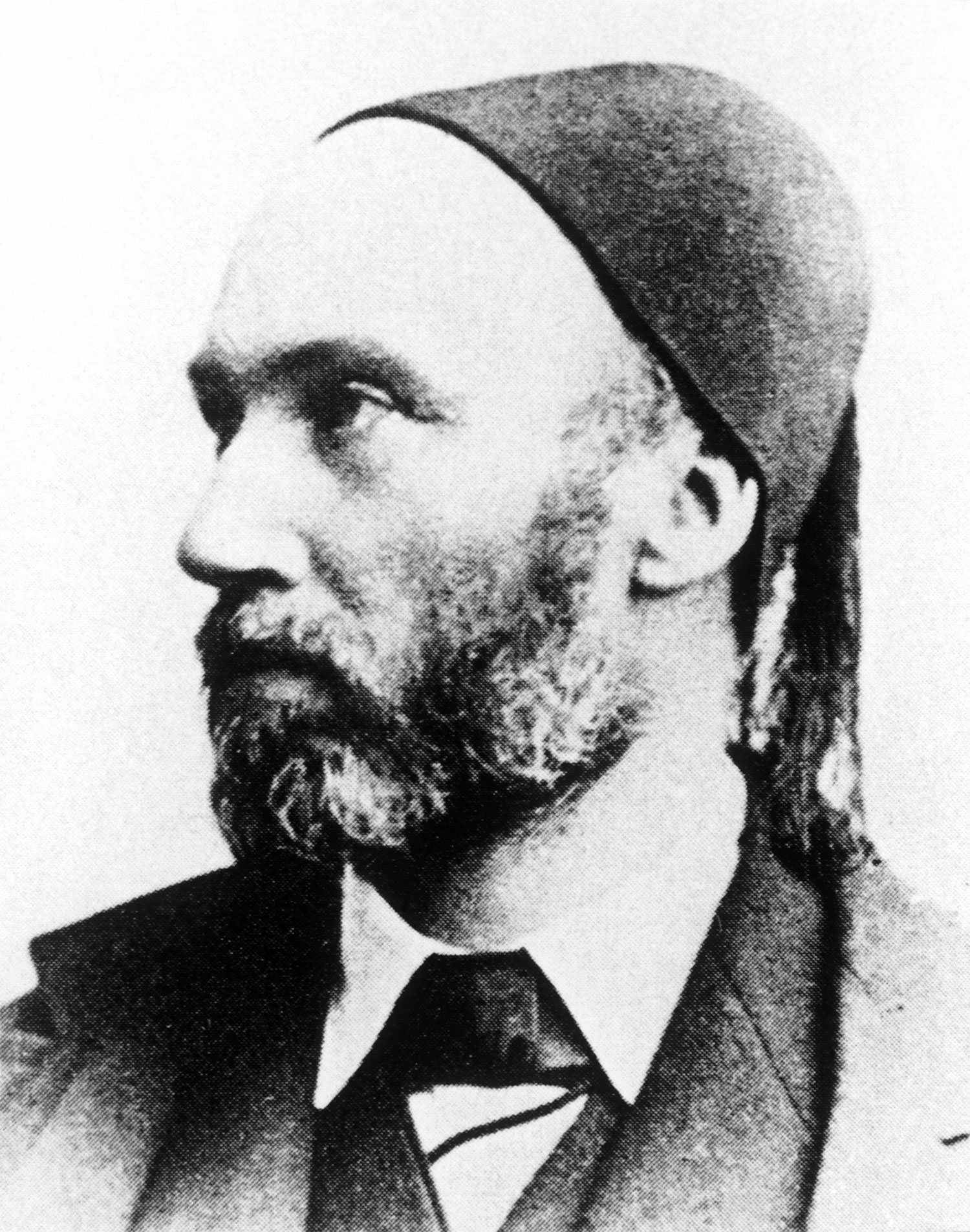The painting we present today is unique. It is a nighttime view showing an eyewitness account of the Great Comet of 1843, painted by the astronomer Charles Piazzi Smyth.
The earliest observation occurred on the evening of 5 February (Yes! On this day in history!), 1843, and Smyth recorded its appearance at the Royal Observatory, Cape of Good Hope, South Africa, between 3 and 6 March. When at its greatest brilliance, it was visible only from southern latitudes. Since the main purpose of the painting was to show the comet, the sky dominates the image. The comet formed a disk and Smyth described its nucleus as "a planetary disk, from which rays emerged in the direction of the tail." He observed that to the naked eye it appeared to have a double tail, with the two streamers proceeding from the head in perfectly straight lines. The sighting was notable because of the intensity of light (apparently outshining any comet seen in the previous seven centuries) and for the length of its tail.
The painting shows the dramatic effect of the phenomenon; the brilliance of the stars and the red of the sunset continues the effect.
A figure can be seen in the foreground, standing at the edge of the viewing platform to look at the comet with the range of mountains in the distance, glowing red. The relative scale of man to mountain emphasizes the magnitude of the incident.
Smyth was an astronomer, geodesist, spectroscopist, meteorologist, pyramidologist, photographer, traveler, and writer. He realized that cities were not the ideal place for astronomical observations and fought for the settlement of observatories on mountains. In 1856, he organized an expedition to the Canary Islands and also travelled to Russia, France, Madeira, Sicily, and Egypt. As one of the great British astronomers, he was Astronomer Royal for Scotland for 42 years.
Happy Sunday everyone!
Dear DailyArt user, please consider donating to the development of our new DailyArt apps. Without them we won't be able to operate much longer, as the ones you use now are simply too old. :( Learn how you can help!
P.S. Did you know that artists have documented comets, planets, and stars since the Middle Ages? :O


 Charles Piazzi Smyth
Charles Piazzi Smyth